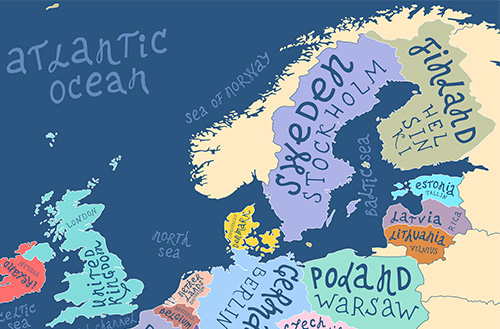

“Finntastic” Finland

Columnist | Introducing the columns written by member of Amorepacific Group
Part 1. “Finntastic” Finland

Amorepacific Luxury Brand Global GTM
Last October, I was lucky enough to join the Global Ward* and study with the almost nearly perfect group of colleagues about Northern European countries, namely Finland, Sweden, Norway, and Denmark, for about 6 months.
Initially, we started studying these countries with the help of books and YouTube, but thanks to the generous gesture of the Ward Master, we had the chance to meet with the employees of Northern European country embassies to South Korea as well as Finnish students studying abroad in Korea, who provided us with valuable insights not found in books. And today, I would like to share some of those with you. So, here’s our first episode: Finntastic Finland.
*Global Ward : A study group made up of Amorepacific employees interested in different nations and cultures, who meet voluntarily to learn about countries and topics of their choice.
Spring came a little early this year, and it makes me a little sentimental to see winter go. Then I thought of Finland, a country that’s covered in snow until April. The only country in the eurozone to receive an AAA rating from a very selective credit rating agency. The country with the least corruption in the world. The country whose people are often considered the politest in Northern Europe. The country whose education system is praised by education experts all around the world. Not to mention, the country whose people love saunas so much that they enjoyed them even during the war against Russia. The country where per capita ice cream consumption is the highest in Europe, and where there are more fantastic Tango dancers than in Argentina! To say Finland is an interesting country would be an understatement. The country is the home of Santa Claus, and much more.
An education haven?
 ▲Source : gettyimagesbank
▲Source : gettyimagesbank “Companies don’t mind hiring employees who don’t have the mathematical knowledge
required to work; that can be taught. But not knowing how to work in a team is a different
story — that can’t be taught, and there’s nothing we can do about it.”
All of us are well aware of the importance of creative talent in our society. Creativity is a value all countries around the world have endorsed for a long time and will continue to do so.
What has made Finnish education so special though? Experts say that the elements of Finnish education that make it so unique comprise the system that hires and supports qualified teachers and the trust people put in them. Trust? You might say Koreans also trust teachers with their kids, but the Finnish idea of trust is a little different. It refers to mutual trust across the entire society, not just for the teachers. So, what is the Finnish trust?
Trust is survival
 ▲Source : gettyimagesbank
▲Source : gettyimagesbank “If a Finn tells you that he will bring firewood on Friday,
then there will be firewood on the spot he promised exactly on Friday, without a doubt;
no firewood meant death as recently as fifty years ago.“
The British journalist Michael Booth talks about this relationship between Finnish trust and climate in his book on Northern Europe, “The Almost Nearly Perfect People.” Finns often trust one another to act in a certain way, even if they don’t know each other. This expectation is rooted in Finland’s high-context culture1, which puts greater emphasis on context and background when it comes to communication or personal relations. Let me explain what a high-context culture is.
Trust each other, and only each other
Happy? Really?

 ▲Source : photographed by myself
▲Source : photographed by myself “Everyone lives in more or less similar houses.
All students use the same supplies at school. I guess experiencing similar things and living similar lives make us less conscious about other people’s lives; everyone is equal,
although I do get jealous over a luxury sedan that my neighbor drives. Haha.”
Shopping for clothes at flea markets and getting out of work at 3 to spend time with their kids, who also have equal access to education, as shown in many documentaries, may not be the case for every Finn. Otherwise, how do you explain Nokia, a mobile phone giant that once boasted a 40% market share, being a Finnish company?
The Birth of Nokia
 ▲Source : gettyimagesbank
▲Source : gettyimagesbank  ▲Source : gettyimagesbank
▲Source : gettyimagesbank The Death of Nokia and the Birth of Supercell
 ▲Source : supercell.com
▲Source : supercell.com 1 This concept pays attention to how messages are explicit and how context is important in communication within a single culture. People in high-context cultures tend to focus more on non-linguistic components in communication, including facial expressions, gestures, and changes in tone.
-
Like
3 -
Recommend
2 -
Thumbs up
3 -
Supporting
2 -
Want follow-up article
1





